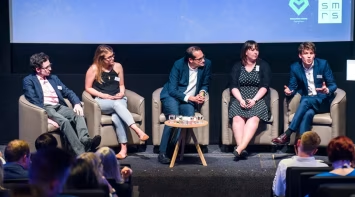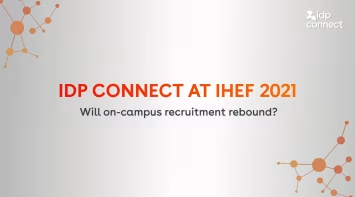"How one humble coffee shop "made" billions and what that means for you."
A recent memory on my social media timeline reminded me that, about a year ago, the world was gearing up for the final season of HBO’s Game of Thrones. Whether or not you followed the show (#teamnightking, anyone?), perhaps you heard of an unintentional snafu where a cast member left a coffee cup in view during the final episode…something that would be decidedly out of place in medieval Westeros. Someone in the Twitterverse was quick to label it a Starbucks cup and, although the cup didn’t actually belong to Starbucks at all, the company raked in $2.3 billion in free advertising from the gaffe.
Ascribing a dollar value to accidental or “free” publicity is nothing new, of course: a cursory search online reveals that President Trump enjoyed $2 billion of free media coverage during the 2016 election, while mass shooters (unfortunately) receive the equivalent of $75 million worth of publicity. Even the Fearless Girl statue, staring down Wall Street’s charging bull, is worth $7.4 million in marketing to its owners at State Street Corp. These mentions and brand insertions are hardly always accidental or unforeseen; two nights ago, I was watching a Netflix show where a police officer pulled a man over and instructed him to “step out of the Buick.” Whether errant coffee cup or careful product placement, it’s clear that brands derive great value from – and place a premium on – people seeing and being reminded of them. But why? For the answer, let's look to the youth. Today’s students are digital natives and consume online content voraciously when researching their educational options. Consider your institutional brand. It's the sum of what people feel about you and think you represent. Institutions the world over work hard to distinguish themselves from other competing brands. Successful differentiation is the outcome of staying internally consistent and externally relevant. The latter imperative, relevance, deals mainly with ensuring that your target audience has opportunities to become aware of your brand and engage with it in casual ways (which is to say: researching a university online is a lower-stakes undertaking than applying for admission). A common truism is that we buy from people we like, and we can also say that we buy from brands we’ve heard of. Having a cutting-edge research laboratory or a Nobel prize-winning faculty member are great selling points, provided students are made aware of them somehow. In the international education space, it’s common to think of top-funnel initiatives as “lead generation.” What this characterization gets wrong is that it overlooks the full scope of return you get for your investment. Certainly, the ultimate strategic goal of any marketing or recruitment activity in international education is enrollment, but this is not and cannot be the direct outcome of every tactic. So what's the value of an impression, after all? Let's entertain a further analogy: how many Toyota owners bought their car only because they heard about it on, say, Monday Night Football’s “Toyota Halftime Show?”
For our purposes, would widespread brand awareness in an up-and-coming international enrollment market help or hurt efforts to forge institutional partnerships there?
To drive inquiries to agent partners?
To grow applications without a discernible 1:1 attribution (“stealth applications”)?
Toyota doesn’t purchase naming rights to NFL halftime shows so that someone will, upon viewing, go straight out to buy a Toyota. They do it so that Toyota remains a household name; so that the social validation of your neighbor driving a Toyota fits into a broader context; so that considering a Toyota for your next vehicle purchase feels comfortable, familiar and even expected. However you feel about Toyotas, upon learning that a friend purchased one, it's unlikely your reaction would be, "A what?"
Is educational choice so different for students? ("You're accepted to...where?") Is the value of publicity, brand awareness and impressions so different for higher education institutions? Data and experience tell us, resoundingly, no. Enrollment managers and admissions teams would do well to always insist on measurable ROI while resisting the temptation to break each piece of the puzzle into discrete, unrelated parts. As when admiring the masterpieces of Monet, you might need to take a step back in order to see the full picture clearly.
You might like...

Q&A with James Smurthwaite: Getting prospective students excited about studying abroad
In this series of interviews we get to know some of our IDP experts who often operate behind the scenes.

Q&A with Rachel MacSween, Director of Client Partnerships UK and Europe at IDP Connect
In our latest Q&A, Rachel talks all things HE and why the sector continues to inspire her

Counsellor Q&A: Thai perspectives on studying in the UK and attracting more Thai students to UK institutions
Specialist advice from our education counsellors for the Thai student market



